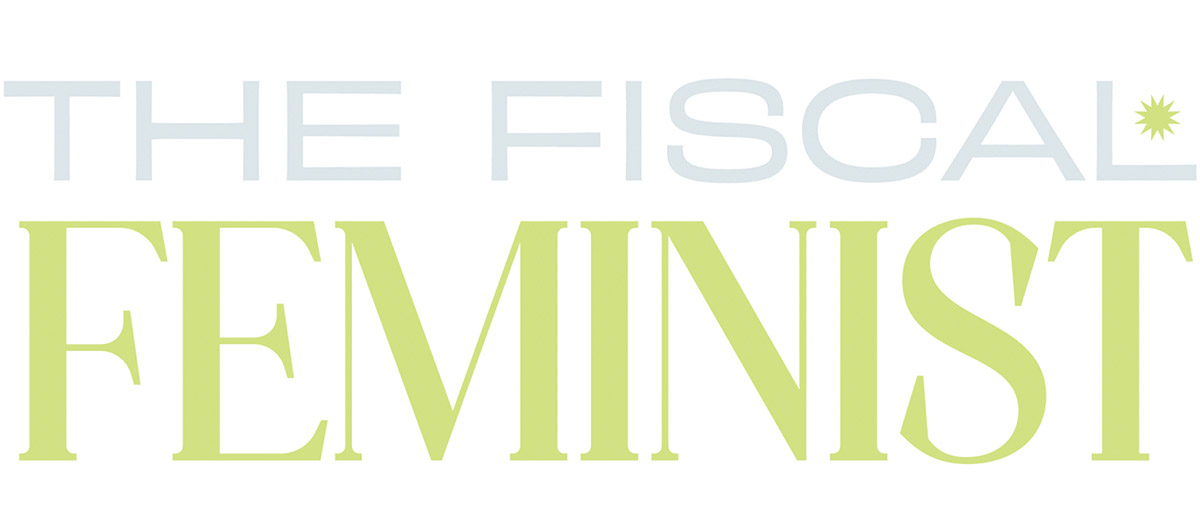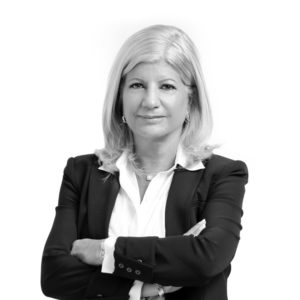The Five Steps Toward Reaching Financial Independence
So, what is Financial Independence???
The word “independence” is defined as “freedom from control or influence of another or others.” Wiktionary also defines “independence” as “the state of having sufficient means for a comfortable livelihood.”
There is no real “absolute” definition of financial independence. Some people may think it means retiring at 40 but that is a very myopic view of it. Rather, I would like to define “financial independence” to mean the ability to live without financial fear during the roller coaster ride of life because you are prepared enough to deal with life’s ups and downs without going into debt, sacrificing and skimping on necessities. It is the ability to live your life as you desire within reasonable parameters, to be able to breathe. It doesn’t mean you never have to work another day in your life, but it does mean you have the freedom to pivot by quitting a job you don’t like, going back to school, starting a new business, or pursuing a new course in life without major upheaval. Freedom to choose, to have options.
Given all that has gone with the recent pandemic, this ability to be financially independent has come into focus. The ability to make it a reality takes time and discipline, but it is worth the effort in the end if it reduces financial fear, anxiety and clears your mind for other endeavors that will increase your quality of life.
What’s the plan to accomplish this?
When thinking about financial independence, one should consider the here and now, and the retirement stage of one’s life. The goal is to have independence in both stages. The first question you need to ask, is what do you want your lifestyle to look like? Obviously, the more minimalist your lifestyle, the less money you need to accomplish independence. But be realistic and honest with yourself in your analysis.
Step One: Budgeting – Understanding how you spend your money.
The first step is to get a picture of what your current spending looks like now. If you don’t know how you are spending your money, you won’t be able to strategize about how to marshal your resources to achieve financial freedom.
You need to get a clear picture of a break-down of your expenditures, both short and long term. By doing the following, you can create the picture:
- Create a list of all your fixed and variable monthly expenses (use your best efforts on the variable costs)
- Fixed costs include monthly bills such as rent, mortgage, utilities, cell phone, gas/transportation, food expense, etc.
- Variable costs include entertainment, clothing, restaurants, all costs that are not essential to your basic living expense.
- If you find it difficult collecting all variable costs, simply get a firm number on your fixed expenses and subtract that from the average of your total monthly expenses over the last couple of months, the figure that remains is an approximation of what your average variable expenses on any given month.
- Total all your monthly expenses and compare them to your monthly income. This will give you a quick snapshot of where you are, and if your monthly expenses exceed your income, you are clearly living beyond your means. First, focus on reducing variable costs to save more. If that alone doesn’t correct the expense overage, evaluate fixed costs, and cut where you can.
Step Two: Determine your total credit card debt balance.
If your expenses exceed your income, you may be incurring credit card debt to make up the difference. Lingering and mounting credit card debt accruing high interest is not our friend. Eliminating this debt is crucial in your fight for financial independence otherwise its continuing presence will cause a long detour to achieving financial freedom.
- Create a payment plan that fits your budget to pay it all off. If your credit score is healthy enough to qualify for a zero percent introductory rate on balance transfers, do that to reduce interest payments. Perhaps find a personal loan with a lower interest rate. Be sure NOT to incur any more debt as you pay off the balances.
- If your accounts are already seriously delinquent, reach out to a nonprofit credit counseling agency such as the National Foundation for Credit Counseling.
- Learn to say no to yourself when considering incurring credit card debt.
Not all debt is bad, but it must be managed carefully. For example, mortgage debt builds equity in a home, or debt incurred for education will enable you to get a better job with a higher salary which will unlock opportunities.
Step Three: Save and Invest
Saving 101
- Build an emergency fund. Once you get your credit card debt under control, it is critical that you save for an emergency fund that will cover three to six months of living expenses – this is ground zero for building financial independence. If something unexpected occurs, at least you will have 3-6 months to gather your thoughts and make next moves without worrying about shelter and food.
- Crucial: Automate your savings! Utilize direct deposit or auto-journals so that every month on a given date, a transfer is automatically made to your savings account. Think of it as paying your future self. Out of sight, out of mind.
- Set goals for what you want to save for and establish a timeline for accomplishing the goals. If the goals look daunting at first, work with either variable, amount of saving or time, to reduce the monthly target to something realistic.
- Understand this process isn’t easy and be patient with yourself!
Investment Strategy
If you earn income the first thing you should do is max out on contributions to your 401(k) or your IRA to get the benefits of tax-deferred growth and possible employer matching contributions in 401(k) plans. Retirement may seem far off, but it comes quicker than you think, so the urgency of early retirement savings cannot be stressed enough. Women live on average longer than men and will need more retirement savings accordingly, and, living on Social Security payments in retirement will replace only 40% of an average worker’s wages.
Once you are maxing out on retirement savings, the next step is to invest for the long-term with a diversified portfolio in stocks, bonds, alternatives, and real estate. Invest in assets that produce income and grow income such as dividend growth stocks. Plan investment strategy to produce supplementary retirement income to Social Security or pensions with stock dividends, IRA distributions, alternatives that pay income, or rental property income.
According to the Federal Reserve, women are less comfortable managing their retirement investments and making investment decisions than men. Only a fraction of American women (26%) are investing in the stock market. A recent study found that only 12% of women are very confident that they will be able to retire comfortably. Further, more than half of women (55%) expect to retire after age 65 or don’t plan on retiring at all! Wow – no rest for the weary woman!
To exacerbate the situation, women are generally more risk-averse than men. A Hearts & Wallets study found that female investors hold more cash than male investors. On average, they allocate 37 percent of their assets to bank savings, checking accounts or CDs—compared to men who allocate 25 percent. Men also have double the allocation to individual stock holdings compared to women.
The upshot is that women need to have a greater sense of urgency with respect to saving for retirement, and they need to confront their investment phobia to attain financial independence. Although holding cash has its place, if the preponderance of your investable money is in cash, it will not keep pace with inflation over time and grow enough to take you through retirement – especially in the current interest rate environment. Financial independence requires a lifetime commitment to prudent investing, it is not a one and done commitment. It needs to be informed and intentional.
Ok, so how do I ascertain that my investment strategy is solid? How do I master my investment phobia?
There are a variety of options that are on offer that will assist you with investing and investment strategy. If you are just starting out, there are low fee, computer-based options (Robo advisors) that choose and manage a portfolio for you. Some offer access to financial advisors for questions, and some are specifically for women investors.
If you want personalized advice and holistic planning, which is my recommendation, do your research and work with a financial advisor. Financial advisors not only can help you with a long-term investment strategy based on your time horizon, personal goals, and risk tolerance, but they can prepare a financial plan which can illustrate how long your money lasts throughout your lifetime based on defined assumptions.
But take note, not all financial advisors are created equal, and you should ask certain questions to the prospective advisor:
- Are you a fiduciary?
Fiduciaries are legally required to work in the “best” interest of their clients. Non-fiduciaries are held to the lesser standard of “suitability” which means they may recommend investments that are not the most ideal for you. Fiduciary advisors are legally bound to eliminate all conflicts of interest. - How do you get paid?
Focus on fee-only advisors. Fee-only advisors usually charge a percentage of assets under management, which means that they have skin in the game because if your assets decrease, they get paid less. Again, this eliminates conflicts of interest and should be a totally transparent arrangement. - What are your qualifications?
The term “investment advisor” is a term that is not a regulated term and hence it can be used by people who are primarily selling investment products but not formulating investment strategy and curating investment selection. Research the person’s designations (are they accredited), educational background and use the Form ADV to check their record. - What is your investment philosophy?
It is important that the advisor explain their strategy to you and that you understand it. Don’t be afraid to ask questions and delve deep into why they have the strategy that they do. You need to be confident in how your long-term financial goals are going to be achieved. If they can’t explain it to you clearly and logically then they probably don’t know either. - Who is your custodian?
It is best if your financial advisor has an independent custodian to hold your investments (rather than act as her own custodian) and from which you will receive monthly statements. - How much access do you have to the advisor? How regularly will you meet with the advisor? Is the advisor available for phone calls and emails outside scheduled meetings?
- Does it feel like a good fit?
Step Four: Really take a hard look at Retirement – Eyes Wide Open!
Women have special concerns about retirement which is why this is its own step. On average, a female retiring at age 65 can expect to live another 21 years, nearly 3 years longer than a man of the same age. Savings can increase a woman’s chances of having enough money to last during her retirement.
Many older women rely on Social Security as their primary or only source of retirement income—it prevents almost 40 percent of retired women from falling into poverty. Many women work, and pay Social Security taxes, and earn credit toward a monthly income at retirement. However, because women on average make less than men, and are more likely to take time away from their career due to family responsibilities, they may have lower Social Security income. In general, Social Security comprises a greater percentage of the total income for unmarried women 65 and older, in contrast to unmarried elderly men and couples. In short, the sooner you create a retirement plan, the more likely you will be able to overcome these financial hurdles.
Many women rely on the spousal benefit in Social Security which is equivalent to approximately half of your spouse’s benefit. If you are divorced and were married for 10 years or more, and don’t get remarried, you will be entitled to the spousal benefit linked to your ex-husband’s social security. Given that we never know what the future holds, whether we are single or married, it is important that we evaluate what sources of income in retirement will be available to us and plan well ahead so we aren’t caught short at this time in our lives.
Step 5: How do we maximize our professional prospects?
Entering the workforce is really where you usually establish your own financial identity and set the foundation for your future. You are responsible for your own credit, debt, and financial destiny. The following are a few tips from successful businesswomen on managing your professional destiny:
- Always negotiate with your employer. Statistics show women rarely negotiate on salary, which may contribute to statistically lower pay rates. Women are four times less likely to negotiate for higher pay than men; 20% say they never negotiate at all.
- As noted earlier, set up retirement savings early! Don’t wait to start saving long-term – especially if your job offers a 401(k) program. If not, consider opening an IRA or Roth IRA and set up automatic monthly contributions that work for your salary.
- Be bold and confident and take on new challenges! If you’re asked to do something that excites you but that you aren’t sure you’re completely ready for, always say yes – you’ll figure out the “how” later. Have faith in yourself!
- Take note of how you spend your time. Review the big time-users in your daily life and how you can reduce those and increase the things that increase your income, your career, your well-being and/or your impact. Find a way to delegate or release the other stuff.
- And finally, don’t give up and focus on the why!
The Upshot!
Don’t procrastinate! The adage “failing to plan, is planning to fail” is really applicable here! Declare your financial independence and get it by planning, discipline, resilience, and very intentional behavior. Let freedom ring!




